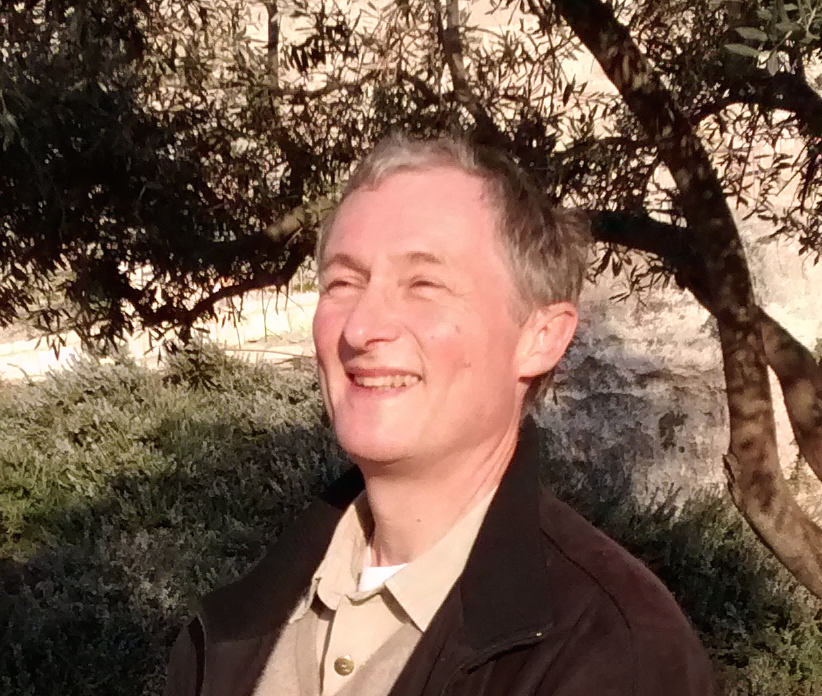
Patrick GUENOUN
Research director,
Director of the PhOM pole of the Graduate School of Physics (University Paris Saclay)
Member of the Laboratoire sur l'Organisation Nanométrique et Supramoléculaire (LIONS)
Member of the Academic Board of University Paris Saclay (Research council)
NIMBE, C.E.A. Saclay, 91191 Gif sur Yvette Cedex, France
Phone: (33)-01-69-08-74-33
Research interests
- Polymers and polyelectrolytes at interfaces, charged brushes,
-Polymers in solution, water soluble polymers, micelles, surfactants. 3D printing of polymer
- Wetting, thin films and adsorption. Block copolymer films
-Biomineralization: nacre modeling and amyloid-like peptides
- Critical phenomena in fluids and polymer solutions, phase separation, thermal transport .
- Experimental techniques : scattering, atomic force microscopy, optics.
Education
1979 Ecole Normale Supérieure (Cachan)
1982 Agrégation of Physics, Physics
1984-1987 PhD (Physics) Université Paris VI (Physics)
“Instability of fluid mixtures, influence of gravity forces and wetting”,
1998 Habilitation à diriger des recherches, Université Paris VI
Employment
1987-2003 Permanent staff member at the Service de Physique de l'Etat Condensé, C.E.A. Saclay
1991-1992 Research Associate at the Department of Chemical Engineering and Materials Science
with M. Tirrell (University of Minnesota, Minneapolis (1991-1992))
2003- Permanent staff member at the LIONS, C.E.A. Saclay
Professional activities
-Member of the Scientific Committee of the Laboratoire Léon Brillouin (1999-2001 )
-President of the Condensed Matter Sciences Group of C.N.E.S. (Centre national d’Etudes Spatiales)
-Member of the MAP panel of the European Space Agency (E.S.A. 2004-2005)
-Member of the Physical Sciences Advisory Group of E.S.A.
-Member of the "Soft matter" committee at Institute Laüe-Langevin (ILL) (2008-2011)
-Member of the selection committee at E.S.R.F. (2012-2014)
-Nanochemistry responsible with C. Petit of DIM Nano'K Ile de France (2013-2017)
-In charge of the "Complex Matter and Systems" group of the Physics Department (PHOM) of University Paris Saclay (2014-)
-Head of Laboratoire sur l'Organisation Nanométrique et Supramoléculaire (LIONS) ( 2010-2019)
-Director of the PhOM pole of the Graduate School of Physics (University Paris Saclay) (2022-
On-going projects
1) Phase separation of concentrated polymer water solutions: how to make ''green'' membranes without organic solvent ?
A PhD funding is available for a project involving polyelectrolytes and their phase separation behavior, leading to polyimide membranes making, take a look here (en français ici).
By using water-soluble polymers with a miscibility gap, phase-separated structures like interconnected spinodal-like decompositions can be turned in membranes after a cross-linking process and evaporation of solvent ( M'barki, O.; Hanafia, A.; Bouyer, D.; Faur, C.; Sescousse, R.; Delabre, U.; Blot, C.; Guenoun, P.; Deratani, A.; Quemener, D. & Pochat-Bohatier, C., Greener method to prepare porous polymer membranes by combining thermally induced phase separation and crosslinking of poly (vinylalcohol) in water,JOURNAL OF MEMBRANE SCIENCE, (2014), {458}, (225-235). https://dx.doi.org/10.1016/j.memsci.2013.12.013
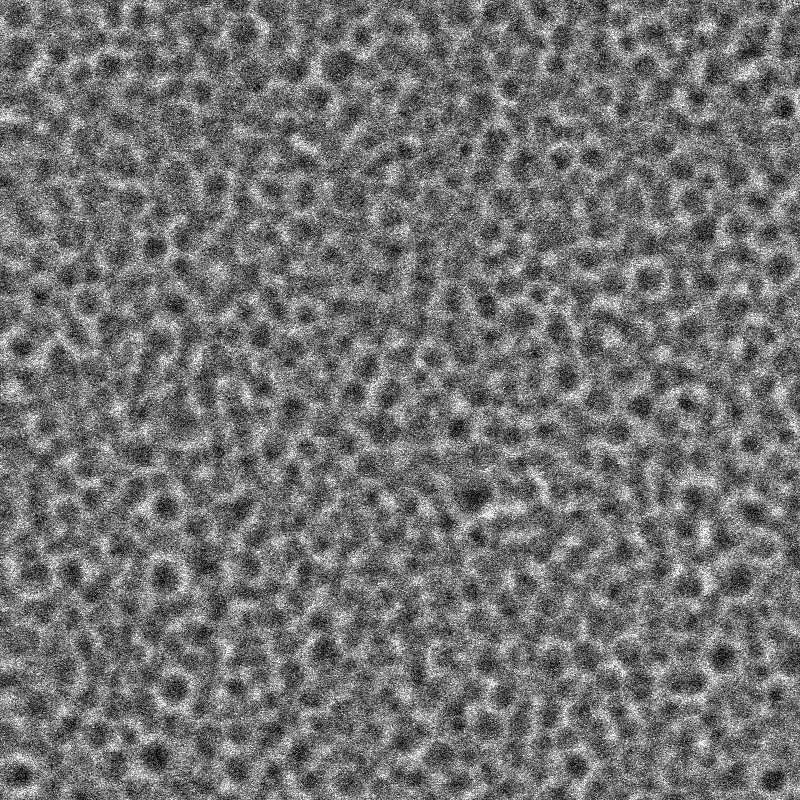
Theoretical results of phase separation adapted to concentrated polymer solutions for making membranes can be obtained by adapted phase field methods, see: https://dx.doi.org/10.1016/j.ces.2017.08.009
Such methods can be extended to deal with fabrication methods of membranes by evaporation of solvent, see: JMS
A post-doc position is opened for observing and characterizing phase separation (PS) patterns of polymer solutions resulting from Thermally Induced PS (TIPS) and Non Solvent Induced PS (NIPS), see here for details.
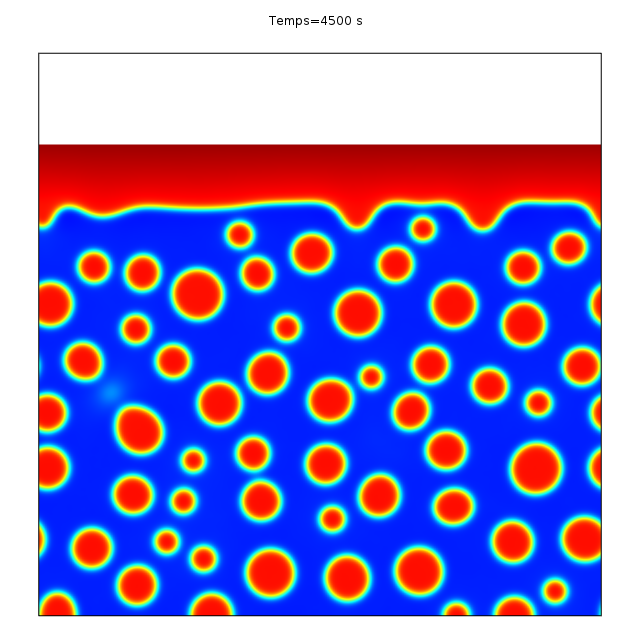

2) Omniphobic surfaces without fluor:
Fluor-based molecules can be replaced on surfaces while keeping an omniphobic character: adorption of biosourced molecules or silicone-grafting can lead to very efficient slipping of drops:
PhD thesis projet of Marion Callau
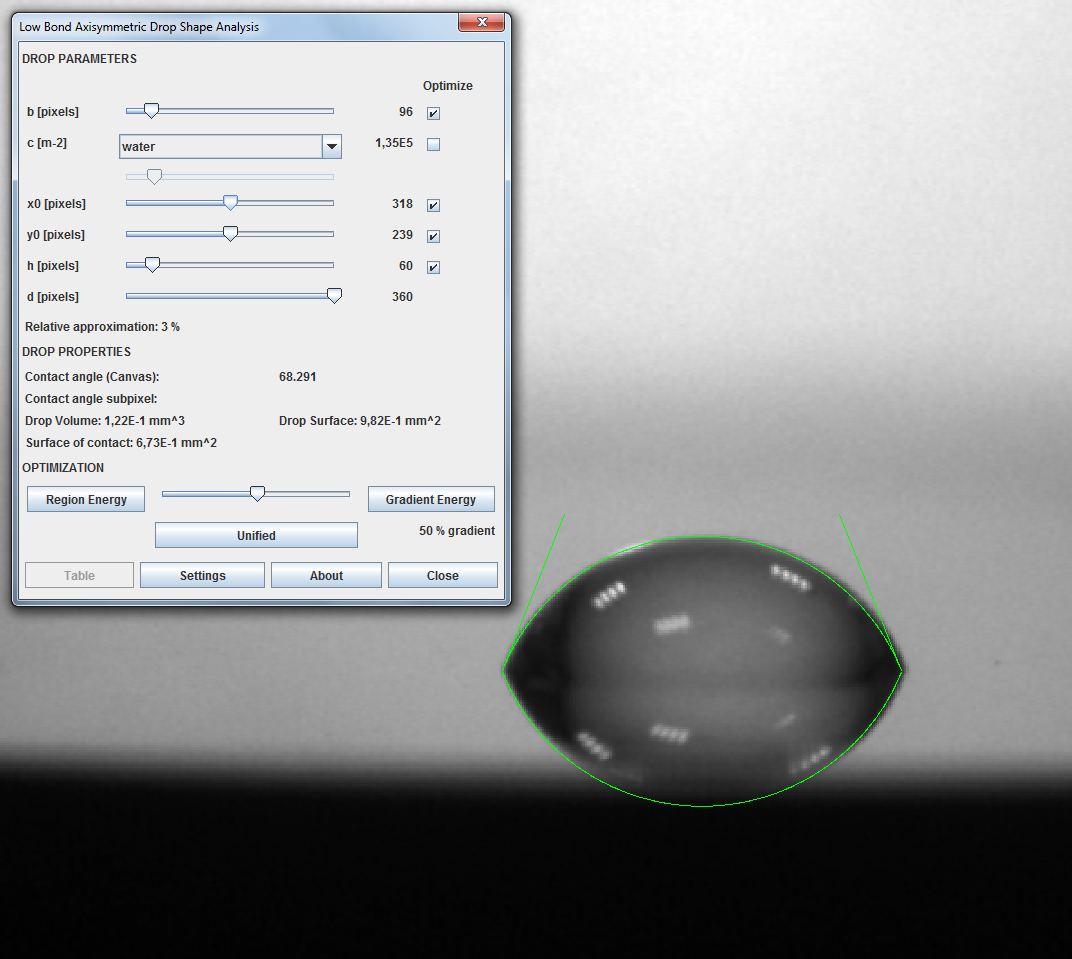
An on-going extension of this work deals with making textile fibers omnirepellent for oils and water without using fluorine-molecules:
see a Post-doc or CDD offer here
3) Invertible and multiple emulsions : how to form one-step, stable multiple emulsions ?
Multiple emulsions, like water in oil in water drops, usually need two surfactants (one for each interface) and are barely stable. By using block copolymers with a hydrophobic moiety and a thermosensitive hydrophilic charged moiety (like in Marchal F, Roudot A, Pantoustier N, et al. JOURNAL OF PHYSICAL CHEMISTRY B Volume: 111 Issue: 46 Pages: 13151-13155 (2007), http://dx.doi.org./10.1021/jp0749827), things change a lot: a single molecule is enough to stabilize for months multiple emulsions in a range of pHs (Besnard, L.; Marchal, F.; Paredes, J. F.; Daillant, J.; Pantoustier, N.; Perrin, P. & Guenoun, P. Multiple Emulsions Controlled by Stimuli-Responsive Polymers, ADVANCED MATERIALS, (2013), 25, 2844-2848).
How far this is due to polymer conformation at the oil-water interface is explained in Besnard, L.; Protat, M.; Malloggi, F.; Daillant, J.; Cousin, F.; Pantoustier, N.; Guenoun, P. & Perrin, P., Breaking of the Bancroft rule for multiple emulsions stabilized by a single stimulable polymer, SOFT MATTER, (2014), 10, 7073-7087 where first successful trials of neutron reflectivity at liquid-liquid interface are depicted. http://dx.doi.org/10.1039/C4SM00596A This was recently refined by further analysis in http://dx.doi.org/10.1140/epje/i2018-11693-8
Recent advances are about the making of biocompatible polymers for performing a similar job and about how salt addition is able to control where multiple emulsions form
Protat, M.; Bodin, N.; Gobeaux, F.; Malloggi, F.; Daillant, J.; Pantoustier, N.; Guenoun, P. & Perrin, P. (2016), 'Biocompatible Stimuli-Responsive W/O/W Multiple Emulsions Prepared by One-Step Mixing with a Single Diblock Copolymer Emulsifier', LANGMUIR 32(42), 10912-10919.. https://dx.doi.org/10.1021/acs.langmuir.6b02590
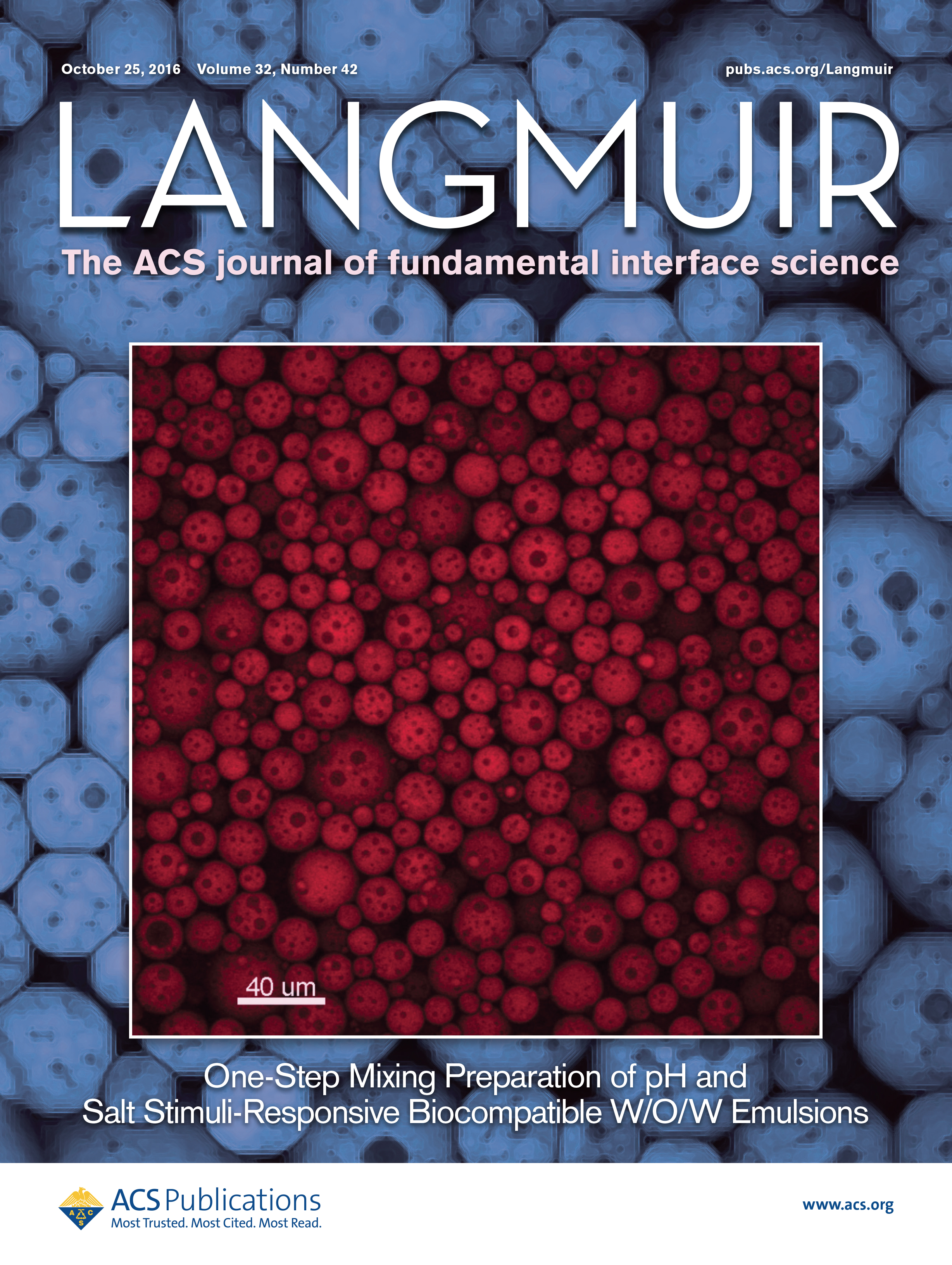
Multiple emulsions can be also obtained by microfluidics and a convenient method was demonstrated in : https://doi.org/10.1039/C7RA05654K
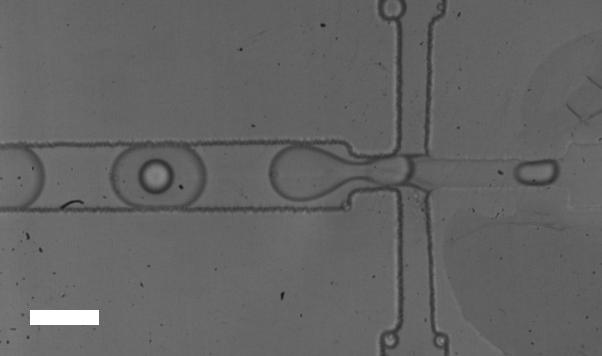
4) Block copolymers organized on a substrate to form adapted 2D or 3D nanostructures
How to simply organize nanoscale structures on surfaces ? Block copolymers offer such a possibility when they are phase separated (the so-called microphase separation). For instance lamellae or cylinders with a nanometric lengthscale can be oriented perpendicular to a substrate (Easy Orientation of Diblock Copolymers on Self-Assembled Monolayers Using UV Irradiation, Liu PH, Thebault P, Guenoun P, et al., MACROMOLECULES Volume: 42 Issue: 24 Pages: 9609-9612 (2009) http://dx.doi.org/10.1021/ma9021357) by a simple surface energy control.

When constraints are provided by a mold
which is nanoimprinted on the film, in-plane organization
of the lamellae is favored as shown by experiment and
calculations (collaboration with Tel-Aviv University, David
Andelman) in an, X. K.;
Andelman, D.; Orland, H.; Thebault, P.; Liu, P. H.; Guenoun,
P.; Daillant, J.; Landis, S., Organization of Block
Copolymers using NanoImprint Lithography: Comparison of
Theory and Experiments. Macromolecules 2011, 44 (7),
2206-2211.
A perfect long-distance arrangement can be obtained by nanoimprinting in conditions where the polymer thin film undergoes nanoflows (Thebault, P.; Niedermayer, S.; Landis, S.; Chaix, N.; Guenoun, P.; Daillant, J.; Man, X.; Andelman, D. & Orland, H. (2012), 'Tailoring Nanostructures Using Copolymer Nanoimprint Lithography', ADVANCED MATERIALS 24(15), 1952-1955.):https://dx.doi.org/10.1002/adma.201103532

A perfect long-distance arrangement can be obtained by nanoimprinting in conditions where the polymer thin film undergoes nanoflows (Thebault, P.; Niedermayer, S.; Landis, S.; Chaix, N.; Guenoun, P.; Daillant, J.; Man, X.; Andelman, D. & Orland, H. (2012), 'Tailoring Nanostructures Using Copolymer Nanoimprint Lithography', ADVANCED MATERIALS 24(15), 1952-1955.):https://dx.doi.org/10.1002/adma.201103532

The next challenge is now to learn how to grow 3D thick ordered structures and transform them into metamaterials (PhD thesis of Florian AUBRIT with CRPP, Bordeaux, V. Ponsinet). This is made possible by including plasmonic nanoparticles in polymer cylinders which are organized perpendicular to a surface. http://dx.doi.org/10.1039/C8TC01477A

A recent study showed how thick ordered BCP
phases can grow by templating and prolonged annealing:
Soft Matter published


Soft Matter published


Selected recent publications:
A. Montiel, T. Nguyen, C.L. Rountree, V. Geertsen, P. Guenoun, D. Bonamy,
Effect of architecture disorder on the elastic response of two-dimensional lattice materials,
Phys. Rev. E. 106 (2022). https://doi.org/10.1103/PhysRevE.106.015004.
N. Bodin-Thomazo, F. Malloggi, N. Pantoustier, P. Perrin, P. Guenoun, V. Rosilio,
Formation and stabilization of multiple w/o/w emulsions encapsulating catechin, by mechanical and microfluidic methods using a single pH-sensitive copolymer: Effect of copolymer/drug interaction,
Int. J. Pharm. 622 (2022). https://doi.org/10.1016/j.ijpharm.2022.121871.
M. Caillaud, F. Gobeaux, M. Hémadi, S. Boutary, P. Guenoun, D. Desmaële, P. Couvreur, F. Wien, F. Testard, L. Massaad-Massade,
Supramolecular organization and biological interaction of squalenoyl siRNA nanoparticles,
Int. J. Pharm. 609 (2021). https://doi.org/10.1016/j.ijpharm.2021.121117.
M. Protat, N. Bodin-Thomazo, F. Gobeaux, F. Malloggi, J. Daillant, N. Pantoustier, P. Perrin, P. Guenoun,
pH and ionic strength triggered destabilization of biocompatible stable water-in-oil-in-water (W/O/W) emulsions,
JCIS Open. 5 (2022). https://doi.org/10.1016/j.jciso.2021.100039.
A. Baruch-Leshem, C. Chevallard, F. Gobeaux, P. Guenoun, J. Daillant, P. Fontaine, M. Goldmann, A. Kushmaro, H. Rapaport,
Catalytically active peptides affected by self-assembly and residues order,
Colloids Surfaces B Biointerfaces. 203 (2021). https://doi.org/10.1016/j.colsurfb.2021.111751.
Manzanarez, H.; Mericq, J. P.; Guenoun, P. & Bouyer, D.
Modeling the interplay between solvent evaporation and phase separation
dynamics during membrane
JOURNAL OF MEMBRANE SCIENCE, {2021}, {620}
Gosse, C.; Stanescu, S.; Frederick, J.; Lefrancois, S.; Vecchiola, A.; Moskura, M.; Swaraj, S.; Belkhou, R.; Watts, B.; Haltebourg, P.; Blot, C.; Daillant, J.; Guenoun, P. & Chevallard, C.
A pressure-actuated flow cell for soft X-ray spectromicroscopy in liquid
media
LAB ON A CHIP, {2020}, {20}, {3213-3229}
Gobeaux, F.; Bizeau, J.; Samson, F.; Marichal, L.; Grillo, I.; Wien, F.; Yesylevsky, S. O.; Ramseyer, C.; Rouquette, M.; Lepetre-Mouelhi, S.; Desmaele, D.; Couvreur, P.; Guenoun, P.; Renault, J.-P. & Testard, F.
Albumin-driven disassembly of lipidic nanoparticles: the specific case of the squalene-adenosine nanodrug
NANOSCALE, {2020}, {12}, {2793-2809}
Protat, M.; Bodin-Thomazo, N.; Malloggi, F.; Daillant, J.; Campbell, R. A.; Fragneto, G.; Watkins, E. B.; Perrin, P.; Pantoustier, N. & Guenoun, P.
Neutron reflectivity measurements at the oil/water interface for the
study of stimuli-responsive emulsions
EUROPEAN PHYSICAL JOURNAL E, {2018}, {41}
Aubrit, F.; Testard, F.; Paquirissamy, A.; Gobeaux, F.; Wang, X.; Nallet, F.; Fontaine, P.; Ponsinet, V. & Guenoun, P.
Ligand-free synthesis of gold nanoparticles incorporated within
cylindrical block copolymer films
JOURNAL OF MATERIALS CHEMISTRY C, {2018}, {6}, {8194-8204}
Mastropietro, F.; Godard, P.; Burghammer, M.; Chevallard, C.; Daillant, J.; Duboisset, J.; Allain, M.; Guenoun, P.; Nouet, J. & Chamard, V.
Revealing crystalline domains in a mollusc shell single-crystalline prism
(2017) NATURE MATERIALS, , {16}, {946+}
Bouyer, D.; M'Barki, O.; Pochat-Bohatier, C.; Faur, C.; Petit, E. & Guenoun, P.
Modeling the membrane formation of novel PVA membranes for predicting
the composition path and their final morphology
AICHE JOURNAL, {2017}, {63}, {3035-3047}
Brossard, R.; Luchnikov, V.; Guenoun, P. & Malloggi, F.
Patterning of Spontaneous Rolling Thin Polymer Films for Versatile
Microcapillaries
JOURNAL OF POLYMER SCIENCE PART B-POLYMER PHYSICS, {2017}, {55}, {721-728}
Hanafia, A.; Faur, C.; Deratani, A.; Guenoun, P.; Garate, H.; Quemener, D.; Pochat-Bohatier, C. & Bouyer, D.
Fabrication of novel porous membrane from biobased water-soluble polymer
(hydroxypropylcellulose)
JOURNAL OF MEMBRANE SCIENCE, {2017}, {526}, {212-220}
Protat, M.; Bodin, N.; Gobeaux, F.; Malloggi, F.; Daillant, J.; Pantoustier, N.; Guenoun, P. & Perrin, P.
Biocompatible Stimuli-Responsive W/O/W Multiple Emulsions Prepared by
One-Step Mixing with a Single Diblock Copolymer Emulsifier
LANGMUIR, {2016}, {32}, {10912-10919}
Chevalier, N. R. & Guenoun, P.
Surface Tension Drives the Orientation of Crystals at the Air-WaterbnInterface
JOURNAL OF PHYSICAL CHEMISTRY LETTERS, {2016}, {7}, {2809-2813}
Sarrazin, B.; Tsapis, N.; Mousnier, L.; Taulier, N.; Urbach, W. & Guenoun, P.
AFM Investigation of Liquid-Filled Polymer Microcapsules Elasticity
LANGMUIR, {2016}, {32}, {4610-4618}
Sarrazin, B.; Brossard, R.; Guenoun, P. & Malloggi, F.
Investigation of PDMS based bi-layer elasticity via interpretation of apparent Young's modulus
SOFT MATTER, {2016}, {12}, {2200-2207}
Besnard, L.; Protat, M.; Malloggi, F.; Daillant, J.; Cousin, F.; Pantoustier, N.; Guenoun, P. & Perrin, P.
Breaking of the Bancroft rule for multiple emulsions stabilized by a single stimulable polymer
SOFT MATTER, {2014}, {10}, {7073-7087}
Tseng, Y.-H.; Chevallard, C.; Dauphin, Y. & Guenoun, P.
CaCO3 nanostructured crystals induced by nacreous organic extracts
CRYSTENGCOMM, {2014}, {16}, {561-569}
M'barki, O.; Hanafia, A.; Bouyer, D.; Faur, C.; Sescousse, R.; Delabre, U.; Blot, C.; Guenoun, P.; Deratani, A.; Quemener, D. & Pochat-Bohatier, C.
Greener method to prepare porous polymer membranes by combining thermally induced phase separation and crosslinking of poly (vinylalcohol) in water
JOURNAL OF MEMBRANE SCIENCE, {2014}, {458}, {225-235}
Salva, R.; Le Meins, J.-F.; Sandre, O.; Brulet, A.; Schmutz, M.; Guenoun, P. & Lecommandoux, S.
Polymersome Shape Transformation at the Nanoscale
ACS NANO, {2013}, {7}, {9298-9311}
Besnard, L.; Marchal, F.; Paredes, J. F.; Daillant, J.; Pantoustier, N.; Perrin, P. & Guenoun, P. Multiple Emulsions Controlled by Stimuli-Responsive Polymers
ADVANCED MATERIALS, {2013}, {25}, {2844-2848}
Nuss, H.; Chevallard, C.; Guenoun, P. & Malloggi, F. (2012), 'Microfluidic trap-and-release system for lab-on-a-chip-based studies on giant vesicles', LAB ON A CHIP 12(24), 5257-5261.
Chevalier, N. R.; Chevallard, C.; Goldmann, M.; Brezesinski, G. & Guenoun, P. (2012), 'CaCO3 Mineralization under beta-Sheet Forming Peptide Monolayers', CRYSTAL GROWTH & DESIGN 12(5), 2299-2305.
Thebault, P.; Niedermayer, S.; Landis, S.; Chaix, N.; Guenoun, P.; Daillant, J.; Man, X.; Andelman, D. & Orland, H. (2012), 'Tailoring Nanostructures Using Copolymer Nanoimprint Lithography', ADVANCED MATERIALS 24(15), 1952-1955.
Publications
